From the perspective of an electronics designer, but also taking into account price/cost and social considerations (see Coltan mining and ethics link below), I tend to avoid Tantalum capacitors under many circumstances, while favouring Multi-Layer Ceramic Capacitors (MLCCs).
My question, bluntly stated is: In which specific cases should I be careful and continue using tantalum capacitors? All sorts of answers and technical approaches to this matter will be very useful to me (and surely for other designers).
Some specific aspects to look into:
- Series equivalent circuit.
- Microphonics. How bad are MLCC really are in this respect?
- Capacitance dependence with voltage and temperature.
- Overvoltage and failure modes.
- Life expectancy and reliability.
Additional context:
- I address specifically Surface Mount Technology (SMT), assuming more than 90% of all tantalum electrolytic capacitors are manufactured in SMD style.
- I am focusing here on high-volume consumer electronics products, discarding specifically high power electronics applications, where other considerations may apply. I am not ruling out power conversion/management circuits, where the above considerations are key for capacitors.
- You can read more about the Coltan social impact at the Wikipedia: https://en.wikipedia.org/wiki/Coltan_mining_and_ethics
